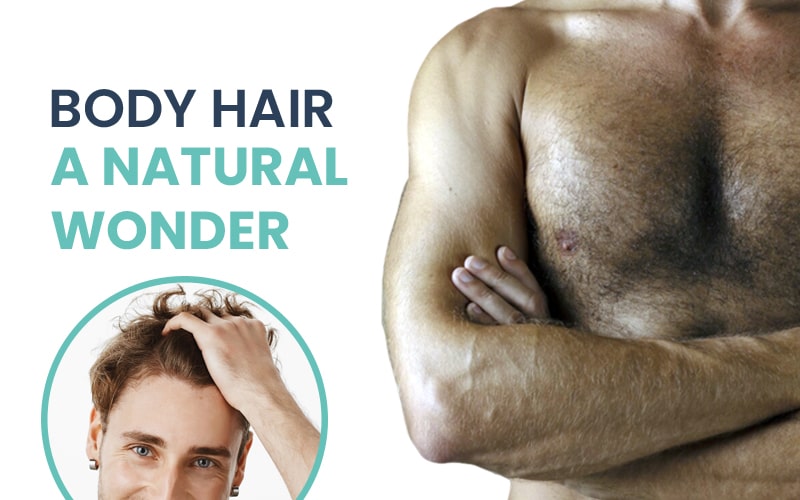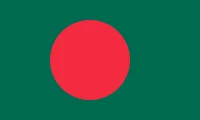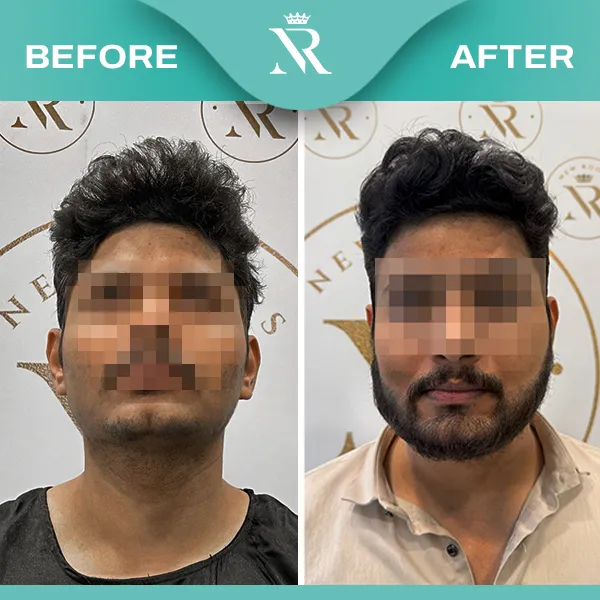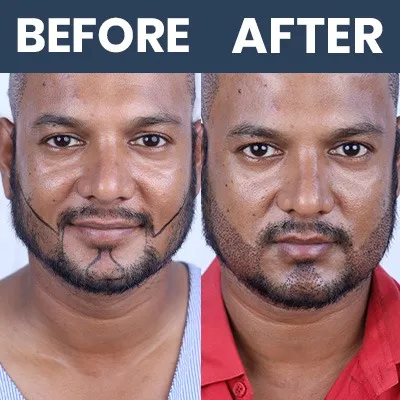

Beard and Moustache Hair Transplant: Enhance Your Facial Hair!
Table of Contents
Body Hair Transplant in Bangladesh – Turning Every Hair into Hope
Body Hair Transplant is an effective technique for patients with substantial hair loss, especially in conditions where the number of grafts from the scalp is likely to be inadequate. This luxury hair transplant approach involves extracting the hair follicles from other body parts like facial hair, chest, back, abdomen, thighs, and feet, among others. A study of the effectiveness of the body hair and scalp hair transplant techniques shows that the two techniques can be used in conjunction to graft large areas of baldness on the scalp.
Understanding Body Hair Transplant
BHT is preferably used where the available hair to be harvested from the patient’s scalp is very scanty or where the patient has very thin hair on the scalp. Here are some critical points about BHT:
- It uses the Follicular Unit Extraction, or simply FUE, method.
- It’s ideal if the recipient can endure Grade 6 hair loss or above.
- Up to 8,000 or more grafts may be required for competent coverage.
Are You the Right Candidate for a Body Hair Transplant?
Not everyone struggling with hair loss finds enough donor hair on the scalp for a successful transplant. That’s where Body Hair Transplant (BHT) comes in as a game-changer.
👉 Who can benefit most from BHT?
Severe Baldness Cases:
If you’ve lost almost all scalp hair and need a large number of grafts (sometimes more than 10,000), BHT can help restore natural-looking density.
Beard & Chest Donors:
For patients whose scalp donor area is weak, hair from the beard, chest, or other body areas can be used effectively.
Thin Donor Area on Scalp:
If your previous hair transplant or natural condition has left you with a thin donor area, body hair can act as an additional source.
“BHT allows doctors to combine both scalp and body hair to maximize graft count and improve coverage.”
👉 The Process of a Body Hair Transplant
Specialized Punches for Body Hair
Because body hair has slender roots and thinner shafts, surgeons use finer, smaller-diameter punches compared to those used for scalp hair. This ensures that each follicle is removed safely without damage.
Quick Graft Handling & Placement
Body hair grafts are more sensitive than scalp grafts. To preserve their strength and survival, they must be transplanted quickly and carefully into the recipient area. This step is crucial for achieving natural growth and density.
Body Hair Transplant (BHT) – Your Second Chance at Hair Density
“Think of it as borrowing strength from one part of your body to give confidence back to another.”
1. Consultation & Assessment
Every successful transplant starts with a personalized evaluation. The doctor carefully studies the extent of hair loss, the quality of existing scalp hair, and the availability of donor areas (like beard, chest, or other body regions). This step ensures you are the right candidate for BHT.
2. Preparation of Donor Area
Once the donor area is chosen, it is cleaned and prepared for extraction. Local anesthesia is applied so that the procedure is comfortable and painless.
3. Harvesting the Grafts
Using micro-punch tools designed for delicate body hair, follicles are extracted one by one from the donor area. Because body hair is naturally finer, precision here is critical to protect each graft.
4. Transplanting the Grafts
The harvested grafts are then carefully implanted into the bald or thinning areas of the scalp. Placement angle, direction, and density are managed with great care to ensure the result looks completely natural.
5. Aftercare & Recovery
Once the procedure is complete, the doctor provides detailed aftercare instructions and schedules follow-ups. Proper monitoring helps ensure faster healing and long-lasting results.
Success Rate & Effectiveness of BHT
Skill of the Surgeon
The precision and experience of the surgeon play the biggest role in graft survival and natural results.
Quality of Donor Hair
Thicker, stronger donor hairs (such as beard hair) tend to produce denser results compared to finer hair.
Condition of the Scalp
A healthy recipient site supports better growth and helps achieve fuller coverage.
Studying the literature, it can be concluded that BHT has an impeccable result in cases, especially when the amount of the donor’s scalp hair is minimal. Accordingly, patients report satisfaction levels in terms of hair growth as satisfactory or more in the majority of cases post the procedure.
Cost of Body Hair Transplant in Bangladesh
👉 Additional Cost Factors
The price of a Body Hair Transplant (BHT) in Bangladesh depends on a few key factors—such as the clinic’s location, the surgeon’s expertise, and the number of grafts required to achieve the desired density. While costs may vary from patient to patient, here are some additional considerations to keep in mind:
Travel & Stay:
If you are visiting from another city, expenses for travel and accommodation may add to the total.
Follow-Up Appointments:
Regular checkups may have separate charges.
Complementary Treatments:
Post-transplant therapies or medications that support hair growth can also influence overall cost.
Factor | Estimated Cost (INR) |
Initial Consultation | 500 – 2,000 |
Grafts (per graft) | 30 – 150 |
Total for 6,000 grafts | 1,80,000 – 9,00,000 |
Post-operative care | 5,000 – 20,000 |
Medication | 1,000 – 5,000 |
Total Estimated Cost | 1,87,500 – 9,25,000 |
Precautions & Aftercare
For the best results after BHT, patients should carefully follow post-procedure guidance:
Timely Grafting Matters:
Extracted grafts must be transplanted quickly to ensure survival and natural growth.
Natural Hair Flow:
Since body hair may differ in texture or direction, surgeons carefully place grafts to match the natural scalp pattern for a seamless look.
Understanding Hair Growth Patterns:
👉 Essential Aftercare Tips for Body Hair Transplant
Stay Committed to Follow-Ups:
Attend all scheduled checkups so your doctor can track healing and hair growth progress.
Take It Easy:
Avoid heavy workouts, bending, or lifting during the first week to protect the new grafts.
Keep It Clean:
Gently maintain scalp hygiene to lower the risk of infection while the skin heals.
Stick to Prescriptions:
Use only the medications and topical solutions recommended by your surgeon for smooth recovery and better regrowth.
Be Patient:
Visible results take time—usually several months—so trust the process and allow your new hair to grow naturally.
Conclusion
Body Hair Transplant offers hope for those with severe hair loss and limited scalp donor supply. With expert hands, it can restore not just hair but also confidence. The key is making an informed choice and trusting experienced specialists for natural, lasting results.


